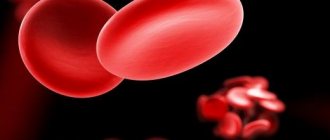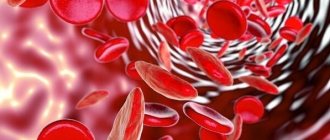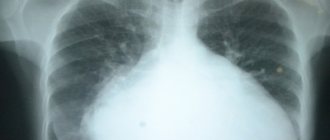Back to list Previous article Next article
21.06.2021
Tags:
useful, flax seeds
5/5 — (1 vote)
Flaxseed is a plant food that contains healthy fats, antioxidants, and fiber. Some call it a "functional food." This means that a person can use it to improve their health.
People grew flax as a crop in ancient Egypt and China. In Asia, it has been used in Ayurvedic medicine for thousands of years.
Today, flaxseed is available in the form of seeds, oil, powder, tablets, capsules and flour. People use it as a dietary supplement to prevent constipation, diabetes, high cholesterol, heart disease, cancer and several other diseases.
Nutrients in flaxseed include:
- lignans,
- antioxidants,
- fiber,
- protein and polyunsaturated fatty acids such as alpha-linolenic acid (ALA), or omega-3.
Consuming these nutrients can help reduce your risk of developing various diseases.
However, there is currently insufficient evidence to support all of these hypotheses. Let's look at what research says about flaxseed and its possible benefits.
Possible beneficial properties of flax
Flaxseed contains several nutrients that may have various health benefits.
Like other plant foods, flaxseed is rich in antioxidants. They can help prevent disease by removing molecules called free radicals from the body. They arise as a result of natural processes and environmental influences. If there are too many free radicals in the body, oxidative stress can develop, which leads to cell damage and disease. Antioxidants help remove free radicals from the body.
Flaxseed is a good source of lignans, which have antioxidant properties. According to some scientists, flaxseed may be more than 800 times richer in lignans than most other foods.
The following sections take a closer look at the possible benefits of flaxseed.
Reducing the risk of cancer
Flaxseed contains omega-3 fatty acids. Research shows that they may help prevent the growth of various types of cancer cells. One 2013 study found a lower incidence of breast cancer among women who regularly consumed flaxseed.
Additionally, in 2021, the review authors concluded that flaxseed may help reduce the risk of developing breast cancer after menopause.
Lignans are a type of phytoestrogens, which are plant-derived nutrients that act similarly to estrogen. There was previously concern that phytoestrogens might increase the risk of breast cancer, but recent research suggests they play a protective role.
Normalize cholesterol levels and improve heart health
The American Heart Association (AHA) recommends eating more fiber and omega-3s to promote heart health. Lignans may also help prevent cardiovascular disease. Flaxseed contains all of these nutrients.
Flaxseed also contains phytosterols. They are similar in structure to cholesterol, but they help prevent cholesterol from being absorbed in the intestines.
Therefore, consuming phytosterols may help lower the levels of low-density lipoprotein (LDL), or “bad” cholesterol, in the body.
In 2010, researchers studied the effect of flaxseed on cholesterol levels in men. Participants took a 20 mg lignan capsule, a 100 mg capsule, or a placebo for 12 weeks. After taking lignans, cholesterol levels decreased, especially in those who took the 100 mg capsules.
Researchers in a 2012 study of 17 people found that eating flaxseed lowered cholesterol and helped the body eliminate fat, although they noted that overall diet may also play a role. A team of researchers suggested that flaxseed may be beneficial for lowering cholesterol levels.
Some scientists have also linked omega-3 oils, commonly found in fatty fish, to reduced cardiovascular risk. The researchers suggested that flaxseed could provide an alternative to marine sources of omega-3s.
Relieving Arthritis Symptoms
According to the Arthritis Foundation, flaxseed may help reduce joint pain and stiffness . Some people take it for rheumatoid arthritis, lupus, and Raynaud's phenomenon.
Reducing hot flashes
In 2007, a group of scientists published results suggesting that flaxseed may help reduce the frequency or severity of hot flashes in women not using estrogen therapy during menopause.
However, in 2012, following further research, the same group of scientists concluded that flaxseed actually had no effect.
Increased blood sugar levels
Lignans and other phytoestrogens may help reduce the risk of developing chronic diseases such as diabetes.
In 2013, scientists gave 25 people 0g, 13g, or 26g of flaxseed every day for 12 weeks. Participants had prediabetes and were either obese or overweight men or women who had experienced menopause.
The 13 g dose was found to reduce glucose and insulin levels and improve insulin sensitivity, while other doses had no such effect.
Additionally, a 2021 study in rodents found that compounds found in flaxseed may help reduce the incidence of type 1 diabetes and delay the onset of type 2 diabetes. However, these results may not apply to humans.
That same year, 99 people with prediabetes took 40g or 20g of flaxseed or no flaxseed and a placebo every day for 12 weeks. Eating flaxseed was found to lower blood pressure, but did not improve blood sugar levels or insulin resistance.
The benefits of flaxseed for diabetes symptoms remain unclear.
Preventing constipation
Flaxseed is a good source of insoluble fiber, which does not dissolve in water but remains in the digestive tract after eating. There it absorbs water and expands in volume, which can facilitate regular food intake.
However, the National Center for Complementary and Integrative Health (NCCIH) says there is little evidence that flaxseed helps relieve constipation.
The NCCIH adds that eating flaxseed with a little water can worsen constipation and lead to intestinal blockage.
Additionally, too much flaxseed or flaxseed oil can cause diarrhea.
Reducing exposure to radiation
In 2013, scientists found evidence that dietary lignans from flaxseed help mice recover from radiation exposure.
Rodents that consumed lignans had lower levels of organ inflammation, oxidative damage and fibrosis, as well as higher survival rates compared to those that did not consume them.
If further human trials show similar results, flaxseed lignans could help treat lung problems after radiation or radiotherapy.
Other diseases
currently funding research to find out if the nutrients found in flaxseed can help with:
- ovarian cancer;
- cardiovascular diseases;
- metabolic syndrome
- diabetes;
- asthma;
- inflammation of organs.
Uses of flaxseed in Ayurvedic medicine include:
- strengthening general health;
- restoration of skin pH balance;
- prevention of chronic diseases such as diabetes, atherosclerosis and arthritis;
- providing protection against cancer.
Diet against cholesterol
What is atherosclerosis and why is it dangerous?
Today, cardiovascular diseases are the most common cause of disability and death in people of working age. The most common cause of circulatory diseases is damage to the walls of blood vessels due to atherosclerosis. When the blood vessels of the heart are damaged, patients suffer from severe chest pain - angina pectoris, which often ends in myocardial infarction, that is, death of the heart muscle. Atherosclerosis can affect the blood vessels that carry blood to the brain, then disorders develop, including stroke - the death of brain tissue. When the vessels carrying blood to the leg muscles are damaged, unbearable pain appears, the person cannot walk, and eventually gangrene develops.
There are two misconceptions about atherosclerosis. One thing is that in younger people, atherosclerosis is not coming soon. Another thing is that in the elderly, I still have atherosclerosis and it is useless to resist it.
Risk factors for cardiovascular disease
The results of large scientific epidemiological programs examining hundreds of thousands of people and monitoring them for decades have proven the existence of factors that significantly increase the likelihood of developing diseases associated with atherosclerosis at any age. They are called risk factors.
The most dangerous: high blood cholesterol, high blood pressure and smoking. As well as diabetes/high blood glucose levels and overweight – obesity. The effect of one factor enhances the effect of the other, so their combination is especially dangerous. If you reduce the level of each risk factor, for example, blood cholesterol, blood pressure, excess weight and quit smoking, then the overall likelihood of developing cardiovascular diseases will significantly decrease, and the development of atherosclerosis will slow down. Including by reducing blood cholesterol levels.
Two sides of the same cholesterol
Cholesterol is a fat-like substance that is vital for humans. It is part of the membranes of all cells of the body, bile acids necessary for digestion, and steroid hormones. There is a lot of cholesterol in nervous tissue. The liver produces more than enough cholesterol for all this need. But humans consume it with food and often in excess. The main source of cholesterol is fatty animal products. If there are a lot of them in the diet, and there are few cholesterol-free vegetable oils, grains, vegetables and fruits, then the cholesterol level in the blood increases, and it turns from a necessary friend for the body into a mortal enemy.
What are lipoproteins
Not all blood cholesterol is equally dangerous; they talk about “good” and “bad” cholesterol. As a substance, cholesterol is the same, but is found in the blood in different spherical particles - complexes with other fat and protein molecules, they are called lipoproteins. There are low-density lipoproteins that carry cholesterol in the blood to peripheral tissues from the liver, where it is synthesized. If too many of these particles are formed or their breakdown is impaired, excess cholesterol accumulates in the blood, it is deposited in the walls of blood vessels, and connective (scar) tissue grows around its deposits. This forms an atherosclerotic plaque, narrowing the lumen of the vessel and impeding blood flow. The cholesterol in low-density lipoproteins can be called “bad.”
There are different types of atherosclerotic plaques. The most malignant ones - with a large cholesterol core and a thin cap of connective tissue - are called unstable. Such a plaque ruptures easily and opens like an abscess into the lumen of the vessel. In response to this, the body tries to close the resulting damage with a blood clot. Often the thrombus cannot stop growing and, like a plug, blocks the entire lumen of the vessel. The blood flow stops, and the organ tissue dies without oxygen and nutrients. If this happens in the heart, then a myocardial infarction develops, if in the brain, a stroke develops. Such dangerous diseases are caused by elevated levels of cholesterol, which is found in low-density lipoproteins. That is why it is called “bad”. In a detailed laboratory analysis of blood lipids (fats and fat-like substances), this indicator is abbreviated as LDL cholesterol. But there are also “good” lipid-protein complexes in the blood. They are called high-density lipoproteins (HDL). HDL captures and removes cholesterol from where it accumulates in the walls of blood vessels. By “cleansing” blood vessels of excess cholesterol, HDL prevents the formation of atherosclerotic plaques.
The higher the level of LDL cholesterol (“bad” cholesterol) in the blood and the lower the level of HDL cholesterol (“good” cholesterol), the faster atherosclerosis will develop.
Cardiologists around the world believe that every person over 20 years of age should know their cholesterol level. Moreover, it is necessary to do a blood test for “good” and “bad” cholesterol, i.e. detailed lipid analysis. An increase in blood cholesterol is dangerous as a factor contributing to the development of atherosclerosis and severe cardiovascular diseases.
How to reduce bad cholesterol levels
Blood cholesterol levels can be reduced. To do this, you need to change your lifestyle:
- improve nutrition;
- stop smoking;
- move more.
Diet to lower cholesterol
- The basis of all cholesterol-lowering diets is to reduce the consumption of saturated (solid) fats, especially of animal origin (fatty meat, offal, butter, full-fat dairy products, baked goods, etc.) and replacing them with vegetable oils (sunflower, olive, corn) .
- Dairy products with reduced fat content, low-fat cheeses (no more than 30% fat), lean meat, baked goods with vegetable fats, fried fish, and potatoes fried only with vegetable fats are allowed in moderate (limited) quantities.
- Eggs can only be consumed boiled or fried in vegetable oil (omelet).
- More often use foods with reduced fat and cholesterol in your diet - wholemeal bread, whole grain bread, any cereals, pasta, low-fat dairy products, all kinds of vegetable dishes and fruits.
- Among meat products, you should prefer chicken, turkey, and veal. Remove fat and skin from poultry before cooking.
- Eat more fish, especially sea fish, you can introduce 2 fish days a week or eat one fish dish every day.
- Prefer desserts without fat, without cream, without sugar, preferably fruit ones.
- Regularly consume foods that lower cholesterol levels in the body and increase its elimination. They contain soluble fiber (pectin, psyllium, gluten) and form a jelly-like mass when cooked. These are oatmeal (rolled oats), apples, plums, and various berries.
- Eat legumes (beans, peas) regularly.
- When cooking, avoid frying in butter and animal fat. Cook, stew, bake more often. Use cookware with a special coating that does not require adding fat when cooking.
Recommendations for choosing food products:
| Types of products | Recommended | Consume in moderation | Exclude from food |
| Cereals | Whole grain bread, wholemeal bread, porridge, pasta | Fine flour bread | Butter bread |
| Soups | Vegetables | Fish | With meat broth |
| Dairy | Low-fat dairy products and cheeses | Half-fat dairy products and fats | Whole milk, cream, cheeses, fatty dairy products |
| Eggs | Egg white | Eggs | Scrambled eggs with animal fats |
| Seafood | Scallop, oysters | Mussels, crabs, lobsters | Squid, shrimp |
| Fish | All types, especially sea | Fried in vegetable oils, lightly salted | Fried in animal fats, hard margarines or unknown fats |
| Meat and poultry | Chicken, skinless turkey, veal, rabbit | Lean varieties of beef, lamb, ham; liver | Fatty meat, duck, goose, fatty sausages, pates |
| Fats | Vegetable liquid oils: sunflower, olive, soybean | Soft vegetable fat spreads containing no trans fats | Butter, meat fat, lard, hard margarines |
| Vegetables and fruits | Any fresh, frozen, steamed, boiled, legumes | Potatoes fried in vegetable oils | Potatoes and other vegetables fried in animal or unknown fats |
| Nuts | Almonds, walnuts | Peanuts, pistachios, hazelnuts | Coconut, salted |
| Dessert | NOT sweetened juices, fruit drinks, popsicles | Confectionery, baked goods, creams, ice cream with vegetable fats | Baked goods, sweets, creams, ice cream, cakes made with animal fats |
| Seasonings | Pepper, mustard, spices | Unsalted sauces | Mayonnaise, sour cream salted |
| Beverages | Tea, coffee, water, soft drinks | Alcoholic drinks – small/moderate amounts | Coffee or chocolate drinks with cream |
By carefully following the diet, you can reduce blood cholesterol by 10–12%. This diet not only lowers the level of “bad” cholesterol, but also increases the level of “good” cholesterol. If following a diet for 6–8 weeks does not lead to the desired reduction in the level of total blood cholesterol (less than 5 mmol/l) and LDL cholesterol (less than 3 mmol/l), and the risk of developing diseases caused by atherosclerosis remains high, then the doctor will recommend cholesterol-lowering medications. There are many such drugs now. The main thing is not to self-medicate after hearing enough advertisements about miraculous and safe food supplements. Among dietary supplements, only those that contain known food components that affect cholesterol, for example, soluble fiber preparations, can be effective. However, their effectiveness is no higher than a well-established diet; they only help its effect.
Of the medications used to lower blood cholesterol levels, statins are most often prescribed. These drugs, in normal doses, reduce cholesterol by 20–40%. Scientific studies have shown that statins also improve the course of diseases caused by atherosclerosis, reduce mortality from cardiovascular diseases and overall mortality. Using special studies of heart vessels, it was shown that treatment with statins slows the growth of atherosclerotic plaques and even causes them to shrink.
To give up smoking
It has been proven that active smoking by the smoker himself and passive smoking by others increases the risk of developing many serious diseases, primarily cancer and cardiovascular diseases. Tobacco smoke contains a wide range of substances that are toxic to many organs and tissues (nicotine, carbon monoxide, hydrogen cyanide, carcinogens). Thus, nicotine disrupts the tone of the vascular wall and contributes to its damage, spasms, and aggravates the formation of blood clots in blood vessels. Carbon monoxide, combining with hemoglobin, blocks the transfer of oxygen to organs and tissues. Components of tobacco smoke contribute to the development of arterial hypertension, a disruption in the system of cholesterol transfer into the walls of the vessel, exacerbating the deposition of cholesterol in them. This creates a high overall risk of developing cardiovascular diseases.
Sufficient physical activity
Sufficient physical activity is an integral part of a healthy lifestyle. The most accessible and fairly effective type of physical activity is brisk walking in the fresh air. You should exercise 5 times a week, for 30–45 minutes (up to 2 hours). The heart rate should reach 65–70% of that achieved at maximum exercise for a given age. The maximum heart rate for a particular person can be calculated using the formula: 220 – age in years. For example, for a practically healthy person of 50 years old, the maximum heart rate is 220–50 = 170 beats per minute, and the heart rate that is recommended to be achieved during training is 110–120 beats per minute.
Many people don't have enough time to exercise, so it's important to take advantage of every opportunity to move during and after the workday. For example, for workers in “sedentary” professions, it is recommended to stand up to make a phone call or throw trash in a basket, take the stairs instead of using the elevator, hold a short meeting while standing, etc. The results of large studies have shown that the combination of regular physical activity with a reduction in periods of prolonged sedentary work through short breaks makes a complementary significant contribution to the prevention of heart and vascular diseases.
In the presence of heart and vascular diseases, the physical activity regimen is selected by the doctor individually, strictly in accordance with the results of an electrocardiographic test with physical activity.
Nutritional value of flaxseed
According to the USDA, a 7-gram tablespoon of ground flaxseed contains:
- energy: 37.4 calories
- protein: 1.28 g
- fat: 2.95 g
- carbohydrates: 2.02 g
- fiber: 1.91 g
- calcium: 17.8 mg
- magnesium: 27.4 mg
- phosphorus: 44.9 mg
- potassium: 56.9 mg
- folate: 6.09 micrograms (mcg)
- lutein and zeaxanthin: 45.6 mcg
A teaspoon of flaxseed also contains traces of various vitamins and minerals, but not in significant quantities. It also contains lignans, tryptophan, lysine, tyrosine and valine, as well as healthy fats, mostly unsaturated.
People should try to avoid whole flaxseed and consume it in ground form, as the intestines may not be able to absorb the nutrients contained in whole flaxseed.
Risks
The nutrients contained in flaxseed may not be beneficial for everyone. People should avoid flaxseed products or consult a doctor first if they:
- use blood thinners such as warfarin (Coumadin) or aspirin;
- use non-steroidal anti-inflammatory drugs;
- take cholesterol-lowering medications;
- have hormone-sensitive breast or uterine cancer;
- are pregnant or breastfeeding;
- suffer from an allergy to flaxseed.
In general, people who eat flaxseed should avoid raw and unripe flaxseeds, as they may contain toxic compounds. Consume flaxseed ground and with plenty of liquid to prevent digestive problems.
Buy only small bottles of flaxseed oil in dark bottles and store them in the refrigerator, as the oil can spoil quickly. Also, do not use oil after the expiration date stated on the label.
Avoid heating flaxseed oil when cooking. Add oil to already prepared dishes and do not heat it in the microwave.
Symptoms of pancreatic diseases
In addition to acute and chronic forms of pancreatitis, there is pancreatic cancer, which is one of the most aggressive types of oncology. Each disease has characteristic symptoms, the appearance of which should be a direct signal for a comprehensive examination and consultation with a gastroenterologist, endocrinologist and oncologist. In the acute course of pancreatitis, a person is faced with a set of clinical symptoms:
- Severe pain in the left hypochondrium, which can radiate to the side, left side of the back, shoulder, have a girdling nature, or be localized in the left side of the chest.
- Nausea and vomiting that does not bring relief.
- Paleness of the skin.
- Dry mouth.
- Cardiopalmus.
An attack of acute pancreatitis is potentially life-threatening, so if characteristic symptoms appear, it is necessary to call an ambulance. The chronic form of inflammatory damage to the pancreas is characterized by a set of clinical signs:
- Stool disorders in the form of diarrhea that occurs after eating.
- Not pronounced, but periodically occurring pain in the left hypochondrium.
- Nausea and discomfort in the epigastric region after eating spicy or fatty foods, as well as alcohol.
- The feces acquire a heterogeneous consistency, and particles of undigested food may be visible.
- Loss of body weight, partial loss of appetite.
The danger of chronic pancreatitis lies not only in the fact that this process disrupts the entire process of digestion, but also in the fact that a chronic inflammatory process can develop into an acute one at any time. Pancreatic cancer is accompanied by a set of general and type-specific symptoms. Warning signs indicating the development of pancreatic cancer include:
- Pain in the middle part of the abdomen.
- Complete or partial loss of appetite.
- Skin itching.
- Yellowing of the skin.
- Increased gas formation in the intestines, chronic constipation, diarrhea, nausea and vomiting.
- Sudden causeless loss of body weight.
- Increased blood glucose levels.
The described clinical picture can be supplemented by general weakness, malaise, and when performing an ultrasound examination of the abdominal organs, an increase in the size of the liver and gall bladder is observed.
Symptoms of pancreatitis and acute gastritis may be similar. Unlike pancreatitis, with acute gastritis, vomiting brings relief, and abdominal pain is localized in one area and is not girdling. If we talk about how to distinguish gastritis from pancreatitis in the absence of specific symptoms, then only a comprehensive examination and consultation with a gastroenterologist will help in this matter.
Diet Tips
Flaxseed can be consumed ground, in oil form, or in capsules.
It is also found in ready-to-eat foods such as muffins and other baked goods, pasta, snack bars and alternative milks.
Ground flaxseed can be added to:
- breakfast cereals,
- smoothie,
- soups and stews,
- salads and sandwiches,
- yoghurts.
You can also add a spoonful of flaxseed to the muffin mixture or use it to coat chicken instead of breadcrumbs.
However, too much flaxseed can give the food a bitter taste, which some people may not like. One solution is to start with a small amount and gradually add to taste.
What should you pay attention to when choosing the right Omega?
Raw material quality
There are two types of fish raw materials: from the back (carcass) of fish (Fish body oil) or from fish liver (Fish liver oil). It is not recommended to choose fish liver oil as a raw material, since toxic substances can accumulate in the liver that cannot be completely removed by filtration.
Compound
- The percentage of EPA/DHA should be at least 60%.
- The quantitative ratio of EPA/DHA acids is also important; 2:1 is considered the most effective.
- According to WHO recommendations, the daily requirement for Omega-3 is from 500 to 1000 mg.
Presented form
Manufacturers produce Omega-3-based drugs in three forms:
- Natural triglycerides
are the form that occurs in nature. In our body it undergoes complete and rapid metabolism, that is, it is completely absorbed. The concentration of Omega-3 in them is small, and such fractions do not undergo a thorough degree of purification to remove heavy metal impurities. Omega-3 in liquid form is always, as a rule, represented by triglycerides. TG marking. - Ethyl esters
are a synthesized substance, the result of industrial processing of fish oil with ethyl alcohol in order to obtain a high concentration of Omega-3 in it and remove toxins. This form is safer than TG, but is less absorbed. Marking EE, ethyl esters. - Reesterified triglycerides
. This form is resistant to oxidation. The processed raw materials are quickly digested and retain up to 90% of fatty acids. rTG marking - Phospholipids
. This is by far the most expensive form obtained from krill oil. It has the highest concentration of Omega-3, is quickly metabolized and is almost completely absorbed. Another significant advantage of this form is its content of astaxanthins, powerful antioxidants. Safe for pregnant women, as shellfish do not accumulate mercury. Ph marking
Omega 3-6-9 Super, 45 capsules, Evalar
750 ₽
Dietary supplement NOT A MEDICINE
Degree of purification
Fish tend to accumulate heavy metals in their bodies, and the larger the fish, the more toxins it contains. The pharmaceutical industry has GMP and GOED quality and safety standards that guarantee a high degree of purification.
Can flaxseed oil be used in cooking or in salads?
Flaxseed oil can be used in cooking as long as it is not heated. It is best to add it to already prepared dishes and not heat it in the microwave. This is because heating the oil causes it to break down into a potentially harmful form. Flaxseed oil can be used to make salad dressings, but it can quickly go bad. Store it in the refrigerator in a dark-colored bottle and do not use it after the expiration date.
Back to list Previous article Next article










